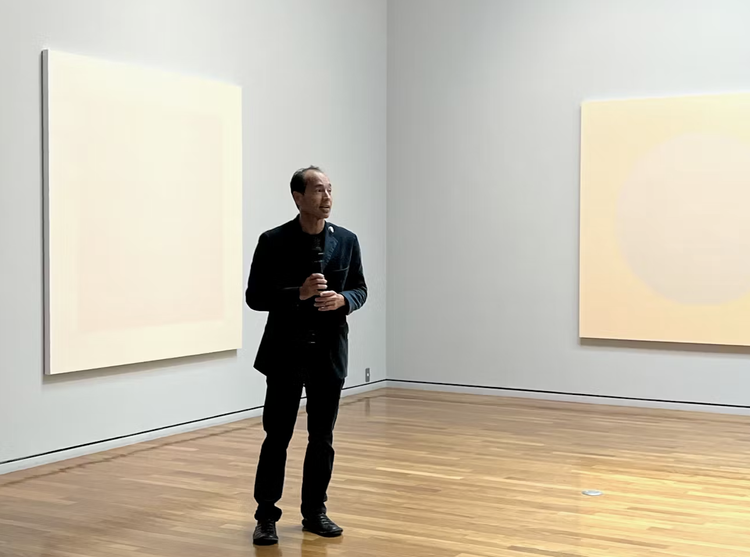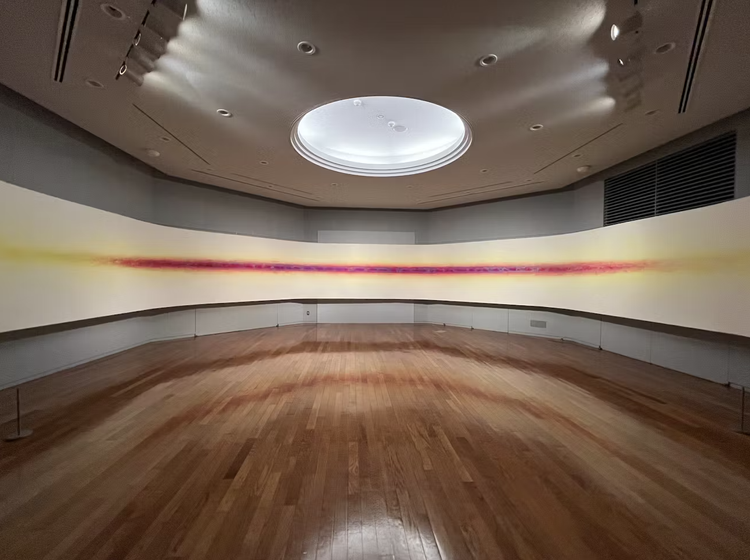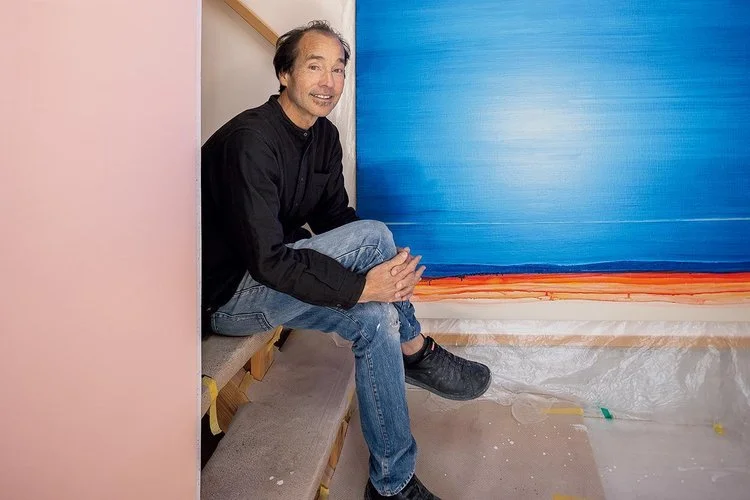Shingo Francis - NY Times Style
/STEP INTO COLOR
“‘Color itself has space,’ says Shingo Francis. We spoke to him about the opening of his first retrospective exhibition in Japan, which focuses on the themes of color and space, which he has continued to explore.”
BY NAOKO ANDO, PHOTOGRAPHS BY YASUYUKI TAKAGI
“Born in Santa Monica, California in 1969 he currently resides between Los Angeles, California and Kamakura, Japan. In 2023, he participated in the Ginza Maison Hermès Forum ‘Interference’ exhibition and created a 6 x 7 meter mural. His works are in the collections of many museums, corporations, and private collections.
The ‘Interference’ series that Shingo Francis has been working on since 2017 has now come to be identified as his masterwork.
This work is unique in that it is painted using pigments containing fine mica that reflects light, and the color changes as the angle of incidence of light changes. The color changes as the angle of the light that hits it changes, and if you change the position you stand in front of the work, the color changes as water refracts light in a rainbow.
In 2023 Ginza Maison he also took on the challenge of creating a huge mural at the ‘Interference’ group exhibition at the Hermès Forum. The Renzo Piano designed building's glass-block exterior allows light to enter the building, constantly changing the work.”
“This series started with the idea that there might be something called geometric portraits. We believe that portraits are not limited to portraits of organic creatures such as humans and animals. ‘My idea was to draw a rectangular motif, but as I spent more time reflecting on myself during the Covid pandemic. The motif naturally turned to a circle, which is dedicated to the cycle of life and the seasons as well as shrines. This also applies to the sacred mirrors held in the temples and the round windows in temple buildings.
’The production process is very stoic. First, I apply a white base coat to the canvas, and once it dries I sand it to make the surface even. When you touch it, the difference between before and after sanding is like that of rough unglazed pottery and smooth porcelain. On top of that, the motif and surrounding areas are painted using pigments containing mica. This pigment takes a long time to dry, and one can't move on to the next step until it is completely dry. Especially when painting the edges, I have to be very careful not to let it ooze out or bleed.’
If there is anything you are not satisfied with, you will have to start over from the beginning. The explanation of the process is like listening to a craftsperson such as a potter or lacquer painter. The works are not simply finished in a flat manner; when viewed up close, traces of hand movements such as brush-strokes remain, which further pleases the viewer's eyes. It is important to judge whether the timing is good or bad.
‘No matter how many photos I take, I can't capture it. Unless you actually stand in front of the work, you won't understand the reality. When confronted with this work, which can be described as a quiet challenge to the SNS age, the dialogue with the work naturally shifts to a dialogue with oneself. Each viewer is able to see themselves in the work. I would like to take a closer look at such works at this exhibition.’
Shingo Francis was raised in the United States and Japan, the son of Sam Francis, a master of French informel (atypical avant-garde art) and American abstract Expressionism, and the media artist Mako Idemitsu. When he was young, his father would draw with him at his own desk and art supplies in his studio. My father often told me, ‘Don't let it turn brown.’ I remember this very well. The pure clarity that his works exude may have been cultivated from an early age.’”
CHIGASAKI CITY MUSEUM
1 Chome-4-45 Higashikaigankita, Chigasaki, Kanagawa 253-0053, Japan
March 30th (Sat) - June 9th (Sun)





